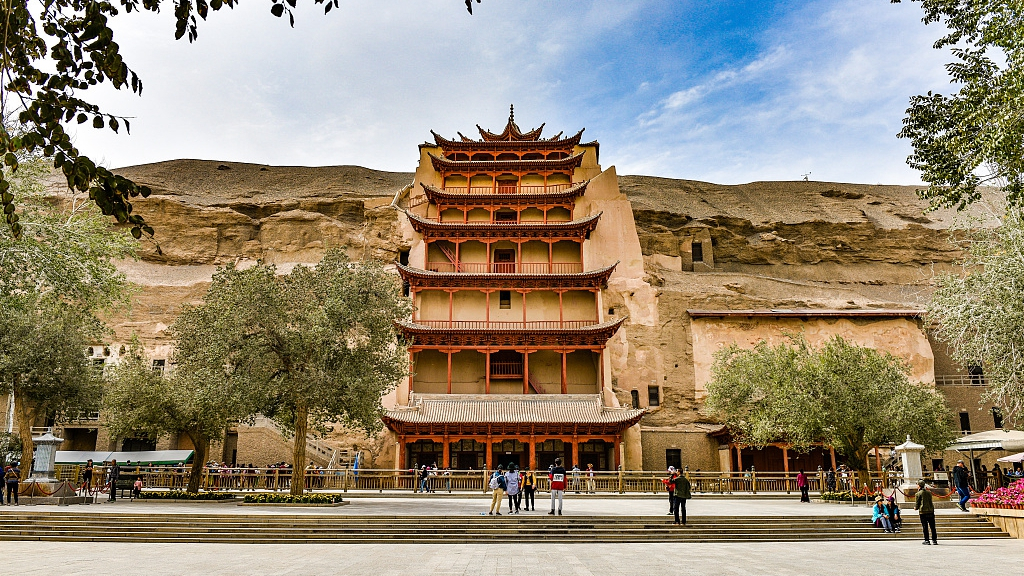
The Mogao Grottoes in Dunhuang City, northwest China's Gansu Province. (Photo: VCG)
Chinese President Xi Jinping made an inspection tour of northwest China's Gansu Province and visited the Mogao Grottoes in Dunhuang City on Monday. Designated as a UNESCO World Heritage Site, the Mogao Grottoes are recognized as one of the most significant collections of Buddhist art in the world.
Follow the footsteps of President Xi and enjoy the Buddhist art treasures.
Located at a strategic point along the ancient Silk Road, the Mogao Grottoes, also known as the Thousand-Buddha Grottoes, are noted for its rich collection of over 1,000-year-old Buddhist statues and murals.
The site houses 45,000 square meters of murals and more than 2,000 painted sculptures with the largest one reaching 34.5 meters in height. Its historical and religious value is incomparable.
To better preserve the age-old caves, modern technology has been adopted to realize the digitalization of the frescoes. Dunhuang Research Academy spent four years on a preservation project called "Digital Dunhuang." It gathers, processes and saves Dunhuang frescoes and painted sculptures with digital technology to achieve the permanent preservation of Dunhuang artworks.
At the Digital Exhibition Center, visitors are able to enjoy an immersive experience and witness the rebirth of the masterpieces. Two 30-minute films document the history of the Mogao Grottoes, the Silk Road and the exclusive cave interiors that are not normally open to visitors.
Travel tips:
1. Transportation: Fly t to Dunhuang Airport and the destination is about 25-minute drive from the airport.
2. Tickets can be purchased at the Mogao Grottoes Reservation and Ticket Center or via online platforms, including the official online ticketing website and its official WeChat account. Valid identification is needed.
3. Shuttle bus service is available between the caves and the Digital Exhibition Center.
Read more: Explore the Flying Apsaras in NW China’s Mogao Grottoes


